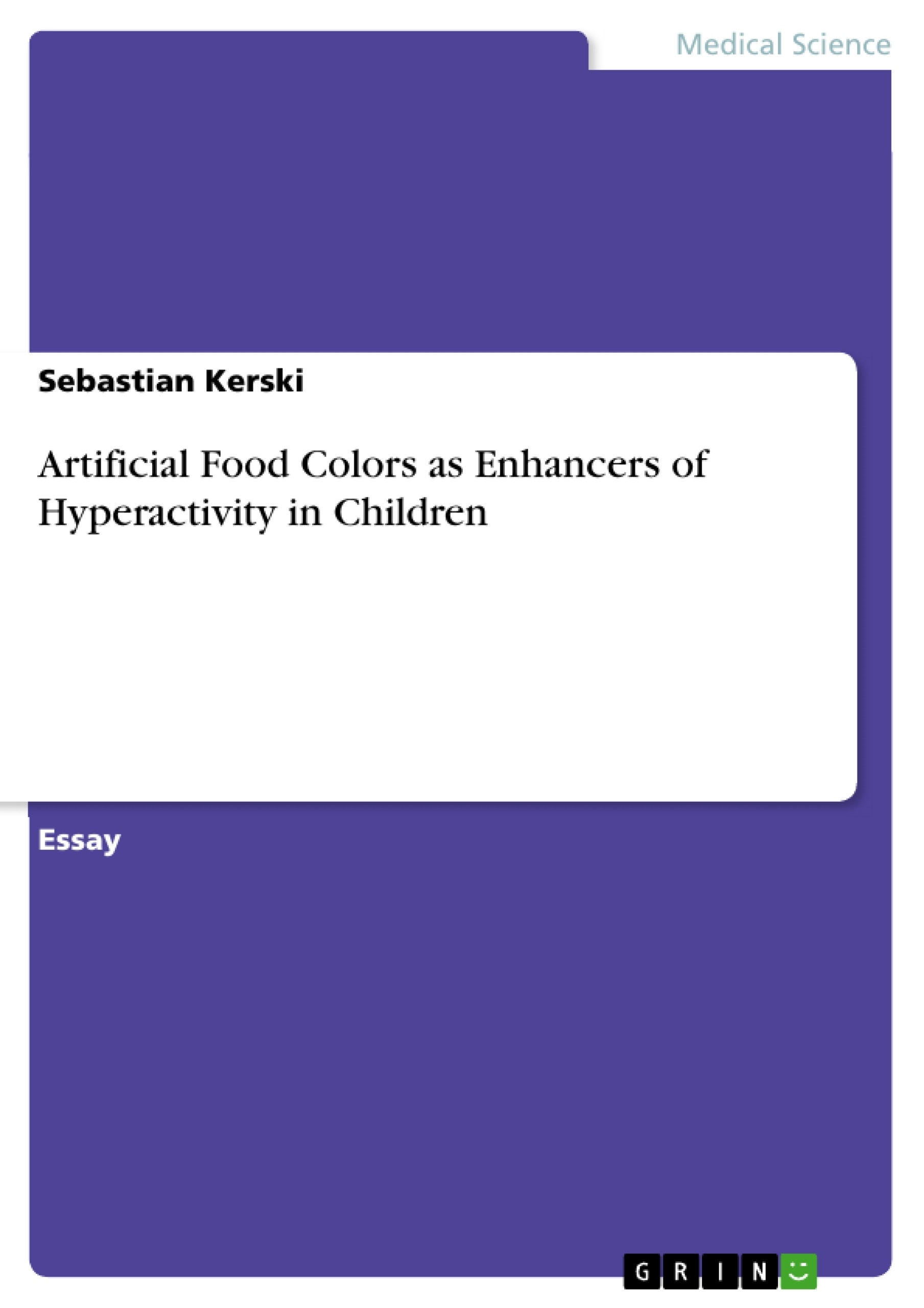Attention-Deficit/Hyperactivity Disorder, short ADHD: Who has not yet heard this term, especially when it comes to children? Over the last decade the number of children diagnosed with this disease has risen significantly (in the United States from 7.8% in 2003 to 11.0% in 2011. Centers for Disease Control and Prevention, 2014). But although this diagnosis becomes more and more common, there is still a lot that we do not know about its causes and right treatment. Not only does the right medication help to guarantee children a normal development, but research also found out that the right diet can have a positive effect on the symptoms of hyperactivity. Artificial food colors in particular have been named again and again in this context. This essay focuses on the most important research concerning the field of artificial food colors and their impact on children with hyperactivity: There are several studies which suggest a link between an increase of hyperactive behavior and certain artificial food colors, and while some countries have already taken steps to remove the tested colors from child nutrition, others still deny their potential danger. This shows how important a more thorough investigation of this topic is and that the restrictions concerning artificial colors in food for children should be revised everywhere.
Inhaltsverzeichnis (Table of Contents)
- Artificial Food Colors and ADHD in Children
- Artificial Food Colors and Their Impact on Children with Hyperactivity
- The Feingold Study
- The Southampton Study
- The U.S. Food and Drug Administration (FDA)
- The European Food Safety Authority (EFSA)
- Conclusion
Zielsetzung und Themenschwerpunkte (Objectives and Key Themes)
This essay examines the research surrounding the impact of artificial food colors on children with hyperactivity. The main objective is to assess the evidence supporting a link between these additives and ADHD symptoms, focusing on key studies such as the Feingold and Southampton studies. It also explores the different positions taken by regulatory bodies, such as the FDA and EFSA, in regard to this issue. Here are some of the key themes discussed in the essay:- The potential link between artificial food colors and hyperactivity in children
- The controversy surrounding the use of artificial food colors in children's food
- The contrasting viewpoints of regulatory bodies on the safety of artificial food colors
- The importance of further research to better understand the effects of artificial food colors on children
- The need for policy changes to address the potential health risks associated with artificial food colors
Zusammenfassung der Kapitel (Chapter Summaries)
- Artificial Food Colors and Their Impact on Children with Hyperactivity: This chapter introduces the topic of artificial food colors and their potential impact on children with hyperactivity. It highlights the rise in ADHD diagnoses and the growing interest in the role of diet in managing hyperactivity symptoms.
- The Feingold Study: This chapter discusses the pioneering research of Dr. Benjamin Feingold in the 1970s, which suggested a link between certain foods and additives and ADHD symptoms. The chapter examines the Feingold diet and its subsequent critiques.
- The Southampton Study: This chapter focuses on the landmark Southampton study, which found a correlation between certain artificial food color mixtures and increased hyperactive behavior in children. The chapter summarizes the study's methodology and its impact on British food regulations.
- The U.S. Food and Drug Administration (FDA): This chapter explores the FDA's stance on artificial food colors, highlighting its denial of a negative impact and emphasis on the importance of these additives in food manufacturing. The chapter also discusses the FDA's view on the research findings, particularly the Southampton study.
- The European Food Safety Authority (EFSA): This chapter examines the EFSA's response to the Southampton study, noting its change in the acceptable daily intake for certain artificial dyes. The chapter contrasts the EFSA's position with that of the FDA.
Schlüsselwörter (Keywords)
This essay examines the ongoing debate surrounding artificial food colors, hyperactivity, and ADHD in children. It focuses on research findings, regulatory positions, and the importance of further investigation. Key concepts explored include artificial food additives, hyperactive behavior, ADHD diagnosis, the Feingold diet, the Southampton study, the FDA, the EFSA, and the need for policy changes in regard to food safety and children's health.- Arbeit zitieren
- Sebastian Kerski (Autor:in), 2014, Artificial Food Colors as Enhancers of Hyperactivity in Children, München, GRIN Verlag, https://www.grin.com/document/286415



